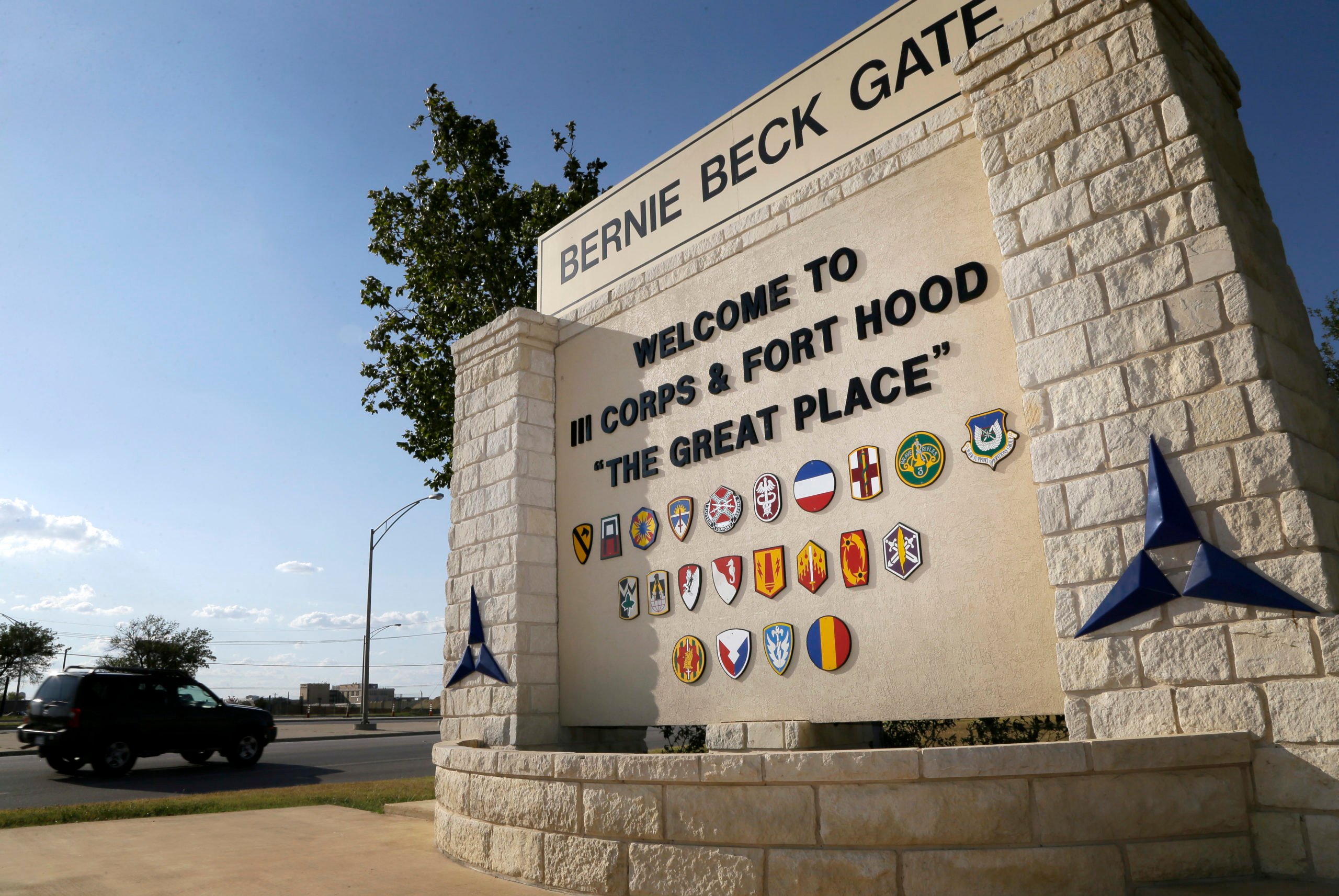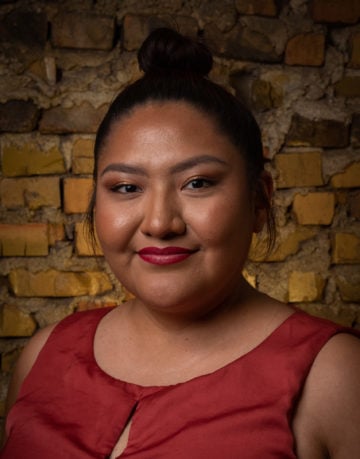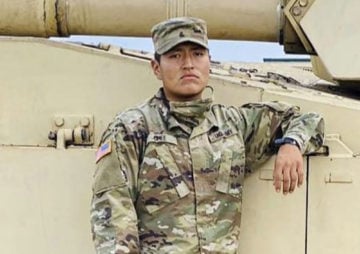
After the Deaths of Two Soldiers at Fort Hood, the Navajo Nation Wants Answers
Navajo families say their loved ones faced hazing and harassment at the Army base outside Killeen.

A version of this story ran in the November / December 2020 issue.
Above: A welcome sign in Fort Hood.
Corlton Lane Chee came to the Fort Hood Army base from the high deserts of New Mexico. He grew up in a satellite community of the Navajo Nation called Ramah Navajo, an area nestled between mesas where the rolling hills are covered with juniper and piñon trees.
According to his sister Carma Johnson, even in the dry desert heat, Chee always helped to maintain his family’s cornfield and build fences. He was in shape and could handle hard labor, so it came as a shock to the family when they learned that Chee, a private in the U.S. Army stationed at Fort Hood, had collapsed during a physical training exercise on August 28.
After being admitted to the Darnall Army Medical Center, he was transferred to Baylor Scott & White Medical Center in Temple and put on life support because of brain swelling.
Five days after he collapsed, Chee passed away. He would become the 28th soldier to die at Fort Hood this year and the second Navajo soldier to lose his life while stationed at the base: Two months earlier, Navajo citizen Miguel Yazzie also died after he was admitted to an off-base hospital for an unknown medical condition. The U.S. Army is still investigating both deaths and has yet to release an autopsy report to the Chee family.
But where Fort Hood officials have been opaque, both Chee’s and Yazzie’s families have been more vocal. In an interview with the Navajo Times, Michael Yazzie said he felt as though his son was being targeted by superiors, while Johnson said her brother had been targeted by his peers.
“There were three white males that did not like him, and they were constantly after him,” Johnson says.

According to Johnson, Chee returned to Fort Hood from a 45-day deployment to Poland on August 24, only to discover that all of his clothing had been stolen. He was able to retrieve only four shirts. Chee didn’t want to leave his room because he didn’t want to encounter the men who were hazing him, his sister said, and from the date of his return to the day he collapsed, he left only to eat.
“I know that he was targeted or he was hazed,” Johnson says. “The whole family believes that, and to this day, we’re still struggling with the fact that they’re telling us he just collapsed.”
Johnson visited her brother in the hospital before he died and said she noticed he had bruises, scrapes, and a laceration on his face. He also had cuts and scrapes on the backs of his knees. She said his head was bandaged, but she couldn’t see the wound underneath. He was unresponsive, so she was unable to talk to him about his injuries.
Army officials told Johnson that Chee had run 2.2 miles at a slow pace when he collapsed. Then, Johnson said, officials changed their story: Chee had run 5 miles and was sprinting at the moment of his collapse. According to the Fort Hood Press Center, Chee and others in the platoon had run to a specified location before turning around and running back as fast as they could to the starting point. The run was 2.2 miles.
Those discrepancies have prompted lawmakers to demand answers.
Senators Martha McSally, an Arizona Republican, and Martin Heinrich, a Democrat from New Mexico, sent a joint letter to Army Secretary Ryan McCarthy asking him to conduct a thorough investigation into the deaths at the base and naming both Chee and Yazzie specifically. Navajo Nation President Johnathan Nez has demanded updates on the investigation. “I don’t know what’s happening there at Fort Hood,” Nez says. “We want answers, not just for our Navajo soldiers, but also answers for all the other families as well.”
Major General John B. Richardson IV, acting senior commander of Fort Hood, has assured Navajo officials that the deaths would be thoroughly investigated. However, neither President Nez nor the families of Chee and Yazzie have received updates.
“I don’t have no trust in the military,” Johnson says. “My family doesn’t.”
Read more from the Observer:
-
F is for Fake: How a dozen possibly fraudulent and forged Indigenous artworks left Texas and ended up on museum walls in Wyoming.
-
The Long Tail of Voter Suppression: As the growing number of Black and Latinx voters threaten the GOP’s stranglehold on power, attempts to limit safe voting options during the pandemic reveal a deeper sickness in Texas politics.
-
Achieving Vision Zero in Houston Isn’t Going To Happen One Intersection at a Time: Eliminating the thousands of injuries and deaths that happen on Houston’s streets will require a reckoning that the car-heavy city does not appear ready to make.


